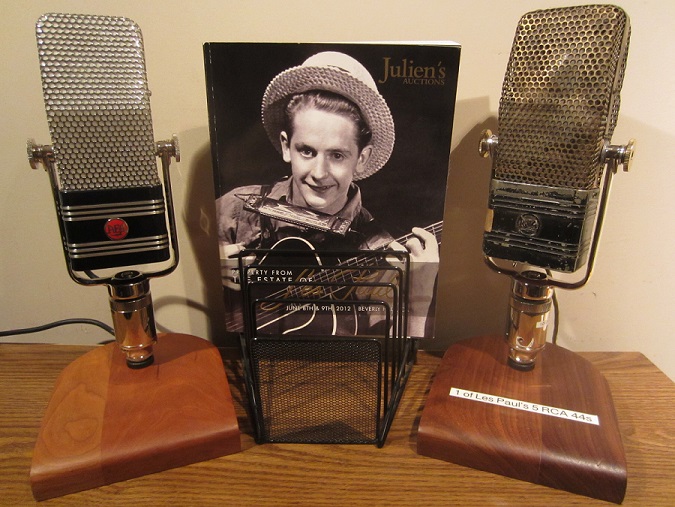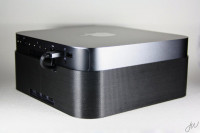An open letter by Wes Dooley (AEA)
An open letter by Wes Dooley (left), founder of AEA Ribbon Mics on:
Studio MicPre Standards in the 50`s and their Microphone / Microphone Interface Problems
One of our customers wrote a letter to Wes Dooley, asking him about the art of vintage guitar recording and the technology behind the sound of Capitol Studios recordings from the 40’s and 50’s. We’re glad to publish Wes’ answer here at *d.a.s.
Winnie,
.
I can see why Jimmy Bryant’s guitar playing got you interested in how Capitol and other studios got their sound. I did not visit these studios until the 1960s but can provide some insights.
.
I suggest you might want to read the excellent 1955 Audio Engineering Society paper written by an RCA engineer: On Electrical Loading of Microphones. Richard E. Werner (1955 October) … page 319 in the AES Microphone Anthology.
.
It describes the state of the art of the ribbon microphone / microphone preamp interface. I wrote a less technical articel about this subject. It is online at http://mixonline.com/online_extras/ribbon_mic_preamps/index.html
.
In 2005 AEA started manufacturing the TRP: T_he R_ibbon P_re to solve these problems.
.
The key musical element of this preamp / microphone equation is the RCA 44B/BX manufactured from 1934 to 1955. Les Paul and Chet Atkins who were Jimmy Bryant’s guitar contemporaries, owned and used 44s.
.
My opinion is the same as theirs, it is my favorite general purpose ribbon microphone. I own one of Les Paul’s five RCA 44s and have attached a picture of it.
.
.
It was his oldest, and although physically quite worn, 80 years later it still sounds sweet. Wally Heider introduced me to the 44 in the mid ’60s. In the mid 70s AEA’s chief engineer was a big fan.
.
Thus when RCA quit manufacturing microphones in 1976, we started servicing them. We had to make our own spare parts, so in 1998 reissued it as the AEA R44C. You might want to look up the How Its Made episode, Ribbon Microphone.
.
Capitol Records has a dozen RCA 44 mics that have been in use since the late 1930s. They’ve been used on everything: Steel guitars, bass drums, horns, percussion, woodwinds, and vocals. They handle everything with a very wide frequency range from below 20 Hz out to 30,000 Hz. Richard Heyser measured this performance and my friends at Schoeps confirmed it.
.
The 44’s low end and high end frequency responses extend smoothly beyond audibility. Up close on guitars, this means that the 44 captures but does not accent, fingering and fret noise.
.
However the 44 has a huge low frequency proximity boost when used very close which can be overwhelming. As an announcer I regard this as a positive feature, but low frequencies can be reduced by using the internal [V] position EQ.
.
This [V]oice mode reduces lows for better low to high frequency balance when sound sources are close. The [M]usic mode is for full response to below 20 Hz when the sound sources are further away. Capitol Records told me that having the [V] position could be dangerous. Musicians sometimes flip the external switch Capitol had added to their RCA 44s.
.
Now that consoles have EQ, they feel that is the place to tailor a mic’s sound. Thus AEA RPQ and RPQ500 preamps have dedicated ribbon EQs, while AEA microphones do not. Our opinion about sound quality is that if it sounds good, it is good.
.
Extensive listening to music was the foundation of RCA’s microphone designs in the 1930s. It is still the foundation of AEA’s microphone design and prototype work today. We measure the acoustical performance of every microphone we make. But we don’t do this until an experienced person has first listened to each microphone, and likes it. Then we make these measurement to establish consistency and so we can hand match pairs.
.
I hope these notes have provided you with some useful insights and answered some of your questions.
.
Like most things in the art and science of audio recording, there are always more things to learn.
.
Best Regards,
.
Wes Dooley / AEA
.
.
.
.
Here you can find all our products from AEA.





Schreibe einen Kommentar
Du musst angemeldet sein, um einen Kommentar abzugeben.